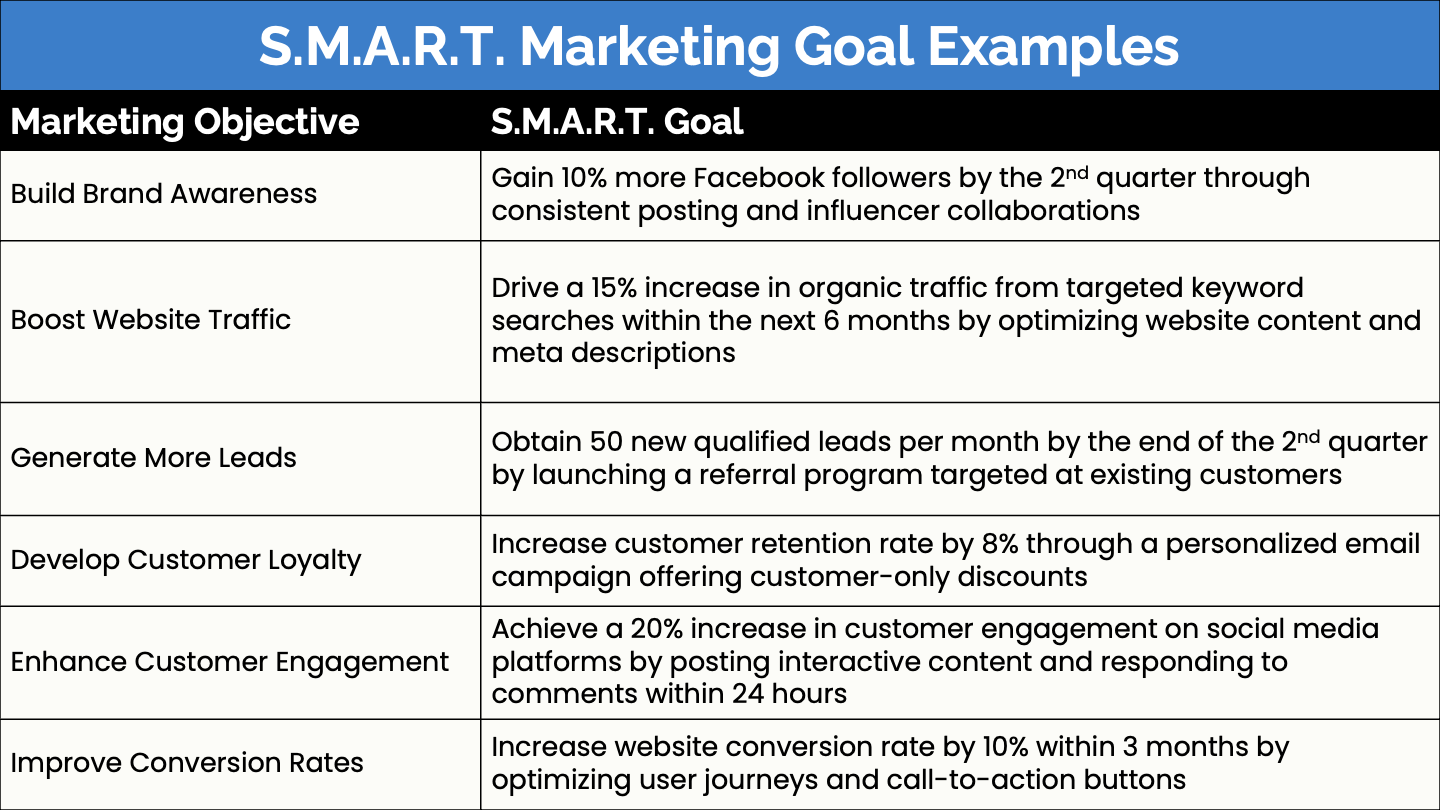How to Create a Marketing Plan That Fits Your Budget
When it comes to marketing your small or medium-sized business (SMB), one of the biggest challenges is making a big impact with a small budget. But here’s the good news: you don’t need a Fortune 500 budget to build a marketing plan that drives results. All it takes is clear goals, smart prioritization, and a bit of creativity.
In this article, we’ll walk you through a step-by-step process to create a marketing plan that fits your budget and still delivers the results you need. Let’s dive in!
Step 1: Set Clear Goals
Before spending a single dollar, you need to know what success looks like. Are you trying to increase brand awareness? Generate leads? Drive sales? Your goals will shape your marketing strategy and help you allocate your resources wisely.
SMART Goals Framework:
Specific: What exactly do you want to achieve?
Measurable: How will you track success?
Achievable: Is this goal realistic with your resources?
Relevant: Does it align with your business objectives?
Time-bound: What’s the deadline?
Example: “Generate 50 new leads for our online store within three months.”
Start by defining the marketing objectives that will support your business and sales objectives, then create a S.M.A.R.T. Goal to track and measure your success.
Step 2: Identify Your Target Audience
Marketing is most effective when it speaks directly to your ideal customers. Define who they are and where they spend their time. Focus your efforts where your audience already exists.
SMART Goals Framework:
Specific: What exactly do you want to achieve?
Measurable: How will you track success?
Achievable: Is this goal realistic with your resources?
Relevant: Does it align with your business objectives?
Time-bound: What’s the deadline?
Pro Tip: Start small. If your audience spends most of their time on Instagram, focus your energy and budget there instead of trying to be everywhere.
We can build personas for you or coach you and provide templates so you can build them yourself!
Example of a persona for an online education business
Step 3: Prioritize Cost-Effective Marketing Tactics
Not all marketing tactics are created equal—especially when you’re working with a tight budget. Focus on strategies that offer the most bang for your buck.
Low-Cost/High-Impact Tactics:
Social Media Marketing:
Use free tools like Instagram, TikTok, and Facebook to build your brand.
Post engaging content like tips, behind-the-scenes videos, or customer stories.
Content Marketing:
Write blogs, create videos, or start a podcast to attract organic traffic.
Repurpose content across platforms to save time and money.
Email Marketing:
Use free or affordable tools like Mailchimp or ConvertKit.
Send newsletters, promotions, and personalized offers to engage your audience.
Search Engine Optimization (SEO):
Optimize your website with keywords your customers search for.
Publish high-value content to rank higher on Google over time.
Collaborations and Partnerships:
Partner with complementary businesses to share audiences.
Offer cross-promotions or co-host events to reach more people.
Step 4: Budget for Paid Strategies Wisely
If you have room in your budget for paid marketing, allocate it strategically. Even small investments can yield big returns when done right.
Affordable Paid Marketing Options:
Pay-Per-Click (PPC) Ads:
Platforms like Google Ads or Facebook Ads let you set daily budgets as low as $5.
Target specific audiences to maximize your ROI.
Boosted Social Media Posts:
Promote high-performing posts to increase visibility and engagement.
Influencer Marketing:
Work with micro-influencers who align with your brand. They often charge less than big-name influencers but have strong audience trust.
Pro Tip: Start small, test your campaigns, and double down on what works.
Step 5: Create a Marketing Calendar
Consistency is key, even with a small budget. Use a marketing calendar to plan and organize your efforts.
What to Include:
Dates for blog posts, social media campaigns, email blasts, and promotions.
Seasonal trends or holidays relevant to your business.
Key performance indicators (KPIs) to track progress.
Pro Tip: Use free tools like Google Calendar or Trello to stay organized.
Example of a social media template from Smartsheets downloaded into Google Sheets.
Step 6: Measure and Adjust
The beauty of digital marketing is that you can track almost everything. Use analytics to measure your performance and adjust your strategy based on what’s working.
Free Analytics Tools:
Google Analytics: Track website traffic and conversions.
Social Media Insights: Measure engagement and reach.
Email Marketing Reports: Monitor open and click-through rates.
Pro Tip: Cut what’s underperforming and reallocate that budget to what’s driving results.
Step 7: Leverage Free or Affordable Resources
Don’t forget to take advantage of free tools and resources to maximize your budget.
Educational Resources: HubSpot Academy, YouTube tutorials, or marketing blogs.
Final Thoughts
A marketing plan that fits your budget isn’t about cutting corners—it’s about being strategic. By setting clear goals, understanding your audience, and focusing on high-impact tactics, you can create a plan that drives results without breaking the bank.
Remember, even the smallest budgets can yield big wins when used wisely. Start small, track your progress, and scale up as you grow. Your marketing MVP moment is just around the corner!
Want more budget-friendly marketing tips? Follow us on Facebook for weekly strategies to grow your brand!



